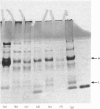Abstract
1. Hepatic glucose 6-phosphatase activity was purified 65-fold in good yield over that in cholate-solubilized microsomal fractions. 2. This preparation still contained five major polypeptides and numerous minor contaminants. 3. The smallest of the five major polypeptides (Mr approx. 18 500) could be purified from heat-treated microsomal fractions. 4. Antisera raised against the heat-stable protein doublet was used to immunoprecipitate specifically glucose 6-phosphatase activity from cholate-solubilized microsomal fractions. 5. This work indicates that hepatic microsomal glucose 6-phosphatase appears to be one or both of the low-molecular-weight heat-stable polypeptides.
Full text
PDF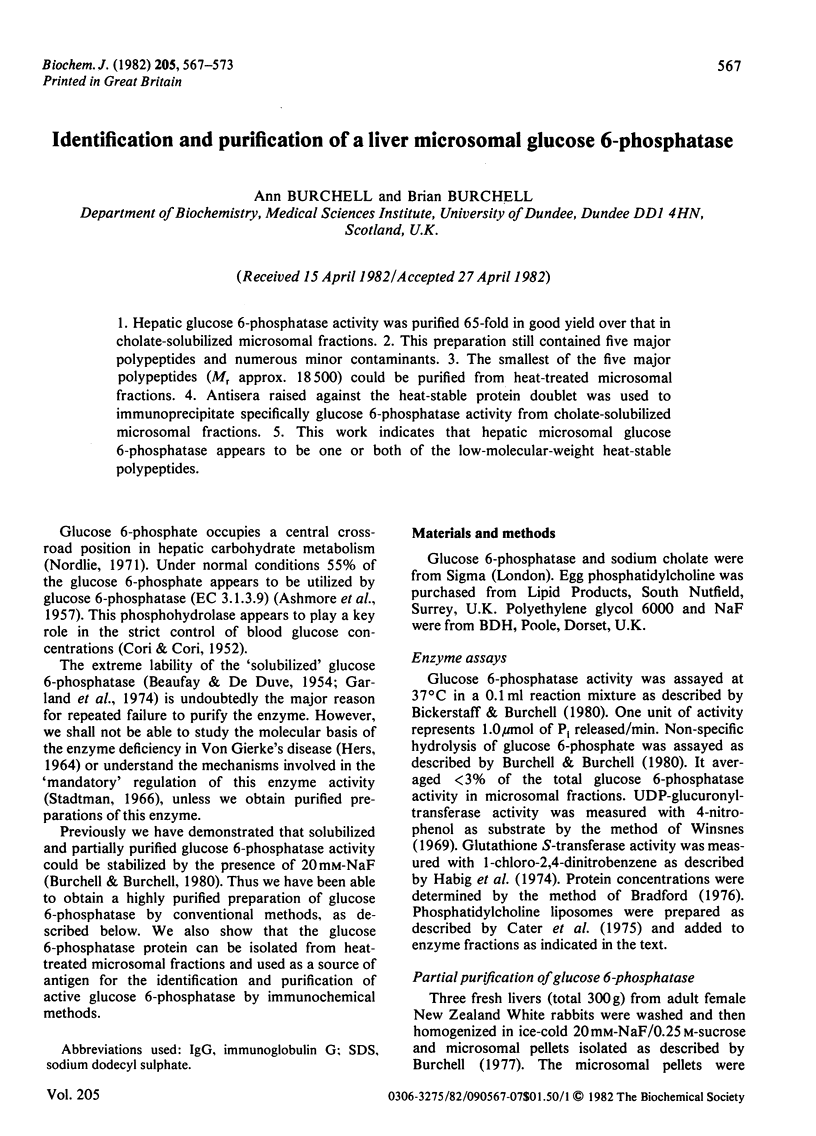
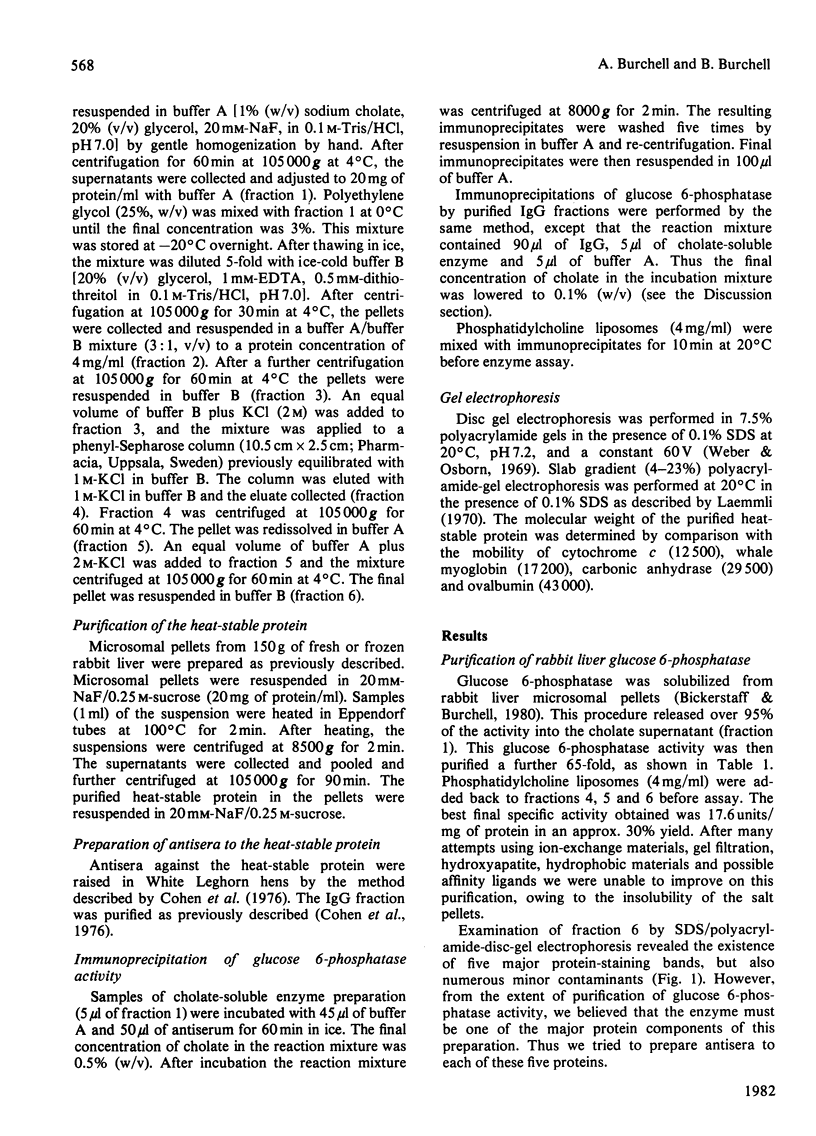
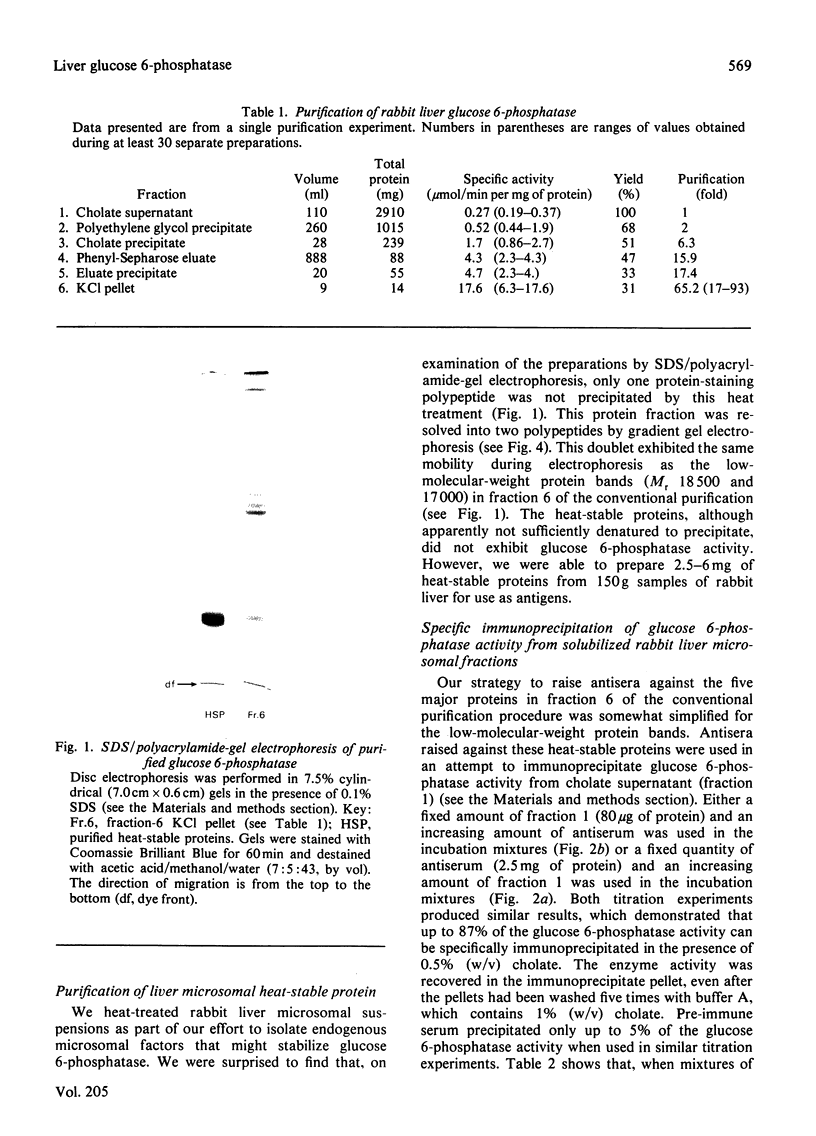
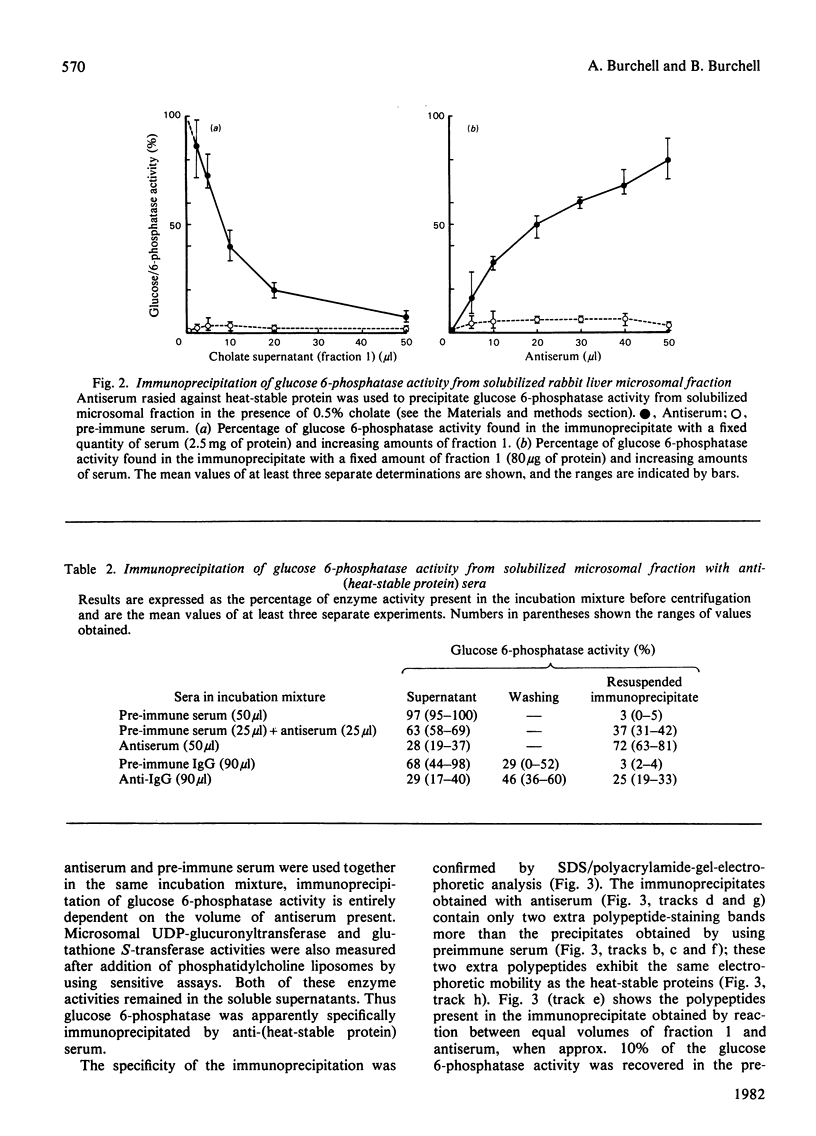
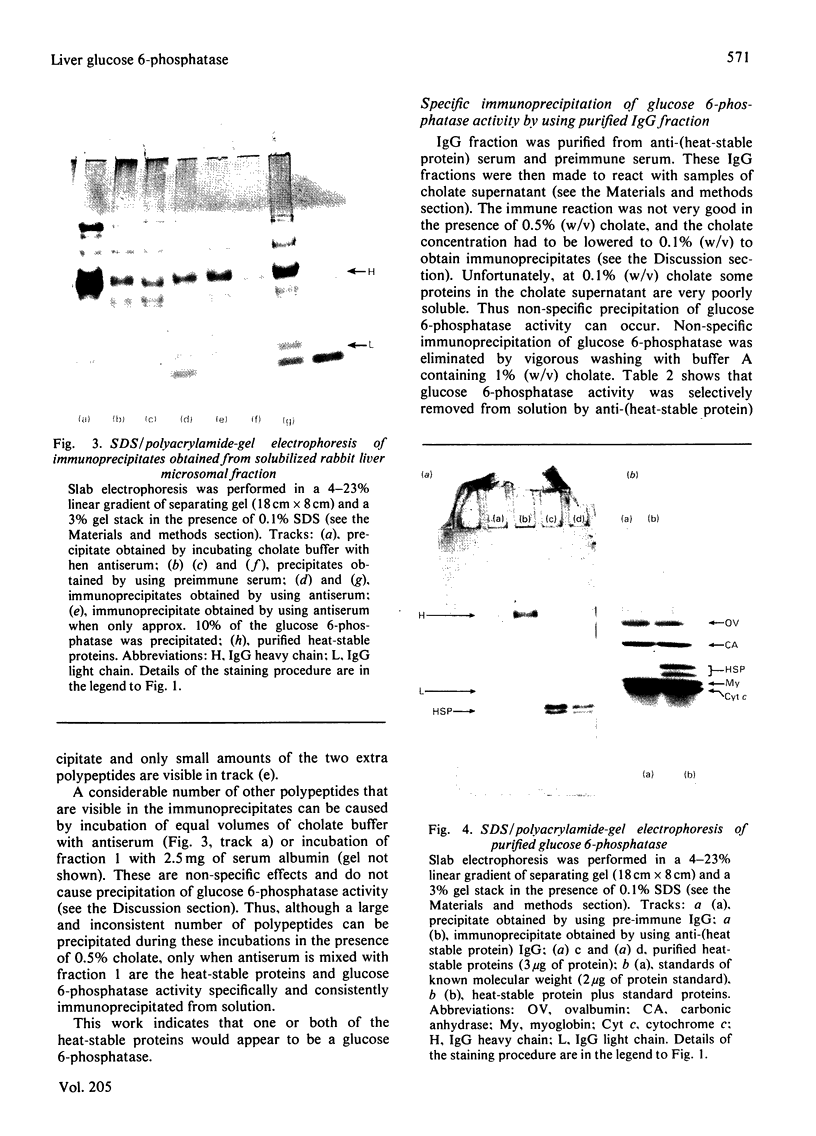
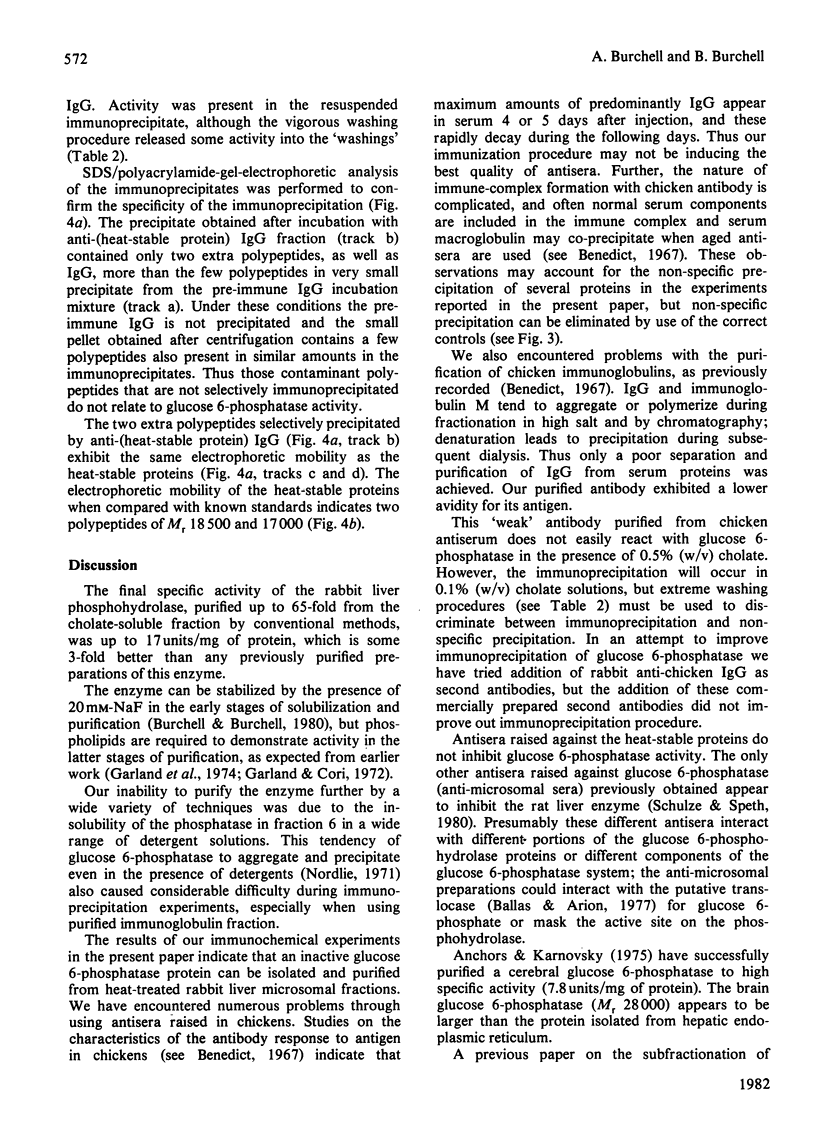
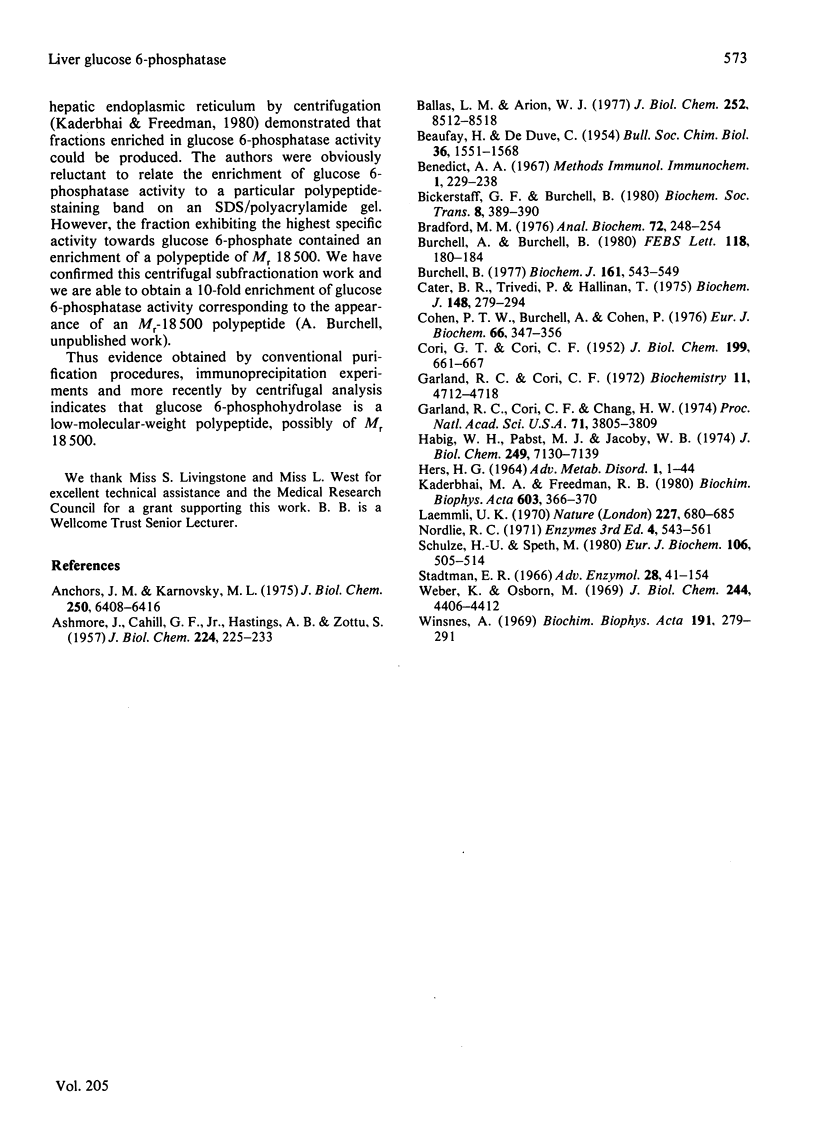
Images in this article
Selected References
These references are in PubMed. This may not be the complete list of references from this article.
- ASHMORE J., CAHILL G. F., Jr, HASTINGS A. B., ZOTTU S. Studies on carbohydrate metabolism in rat liver slices. VIII. Effect of ions and hormones on pathways of glucose-6-phosphate metabolism. J Biol Chem. 1957 Jan;224(1):225–235. [PubMed] [Google Scholar]
- Anchors J. M., Karnovsky M. L. Purification of cerebral glucose-6-phosphatase. An enzyme involved in sleep. J Biol Chem. 1975 Aug 25;250(16):6408–6416. [PubMed] [Google Scholar]
- BEAUFAY H., DE DUVE C. Le système hexose-phosphatasique. VI. Essais de démembrement des microsomes porteurs de glucose-6-phosphatase. Bull Soc Chim Biol (Paris) 1954;36(11-12):1551–1568. [PubMed] [Google Scholar]
- Ballas L. M., Arion W. J. Measurement of glucose 6-phosphate penetration into liver microsomes. Confirmation of substrate transport in the glucose-6-phosphatase system. J Biol Chem. 1977 Dec 10;252(23):8512–8518. [PubMed] [Google Scholar]
- Bickerstaff G. F., Burchell B. Studies on the purification of glucose 6-phosphatase from rabbit liver microsomal fraction [proceedings]. Biochem Soc Trans. 1980 Jun;8(3):389–390. doi: 10.1042/bst0080389. [DOI] [PubMed] [Google Scholar]
- Bradford M. M. A rapid and sensitive method for the quantitation of microgram quantities of protein utilizing the principle of protein-dye binding. Anal Biochem. 1976 May 7;72:248–254. doi: 10.1006/abio.1976.9999. [DOI] [PubMed] [Google Scholar]
- Burchell A., Burchell B. Stabilization of partially-purified glucose 6-phosphatase by fluoride. Is enzyme inactivation caused by dephosphorylation? FEBS Lett. 1980 Sep 8;118(2):180–184. doi: 10.1016/0014-5793(80)80214-6. [DOI] [PubMed] [Google Scholar]
- Burchell B. Studies on the purification of rat liver uridine diphosphate glucuronyltransferase. Biochem J. 1977 Mar 1;161(3):543–549. doi: 10.1042/bj1610543. [DOI] [PMC free article] [PubMed] [Google Scholar]
- CORI G. T., CORI C. F. Glucose-6-phosphatase of the liver in glycogen storage disease. J Biol Chem. 1952 Dec;199(2):661–667. [PubMed] [Google Scholar]
- Cater B. R., Trivedi P., Hallinan T. Inhibition of glucose 6-phosphatase by pure and impure C-type phospholipases. Reactivation by phospholipid dispersions and protection by serum albumin. Biochem J. 1975 May;148(2):279–294. doi: 10.1042/bj1480279. [DOI] [PMC free article] [PubMed] [Google Scholar]
- Cohen P. T., Burchell A., Cohen P. The molecular basis of skeletal muscle phosphorylase kinase deficiency. Eur J Biochem. 1976 Jul 1;66(2):347–356. doi: 10.1111/j.1432-1033.1976.tb10524.x. [DOI] [PubMed] [Google Scholar]
- Garland R. C., Cori C. F., Chang H. W. Relipidation of phospholipid-depleted microsomal particles with high glucose 6-phosphatase activity. Proc Natl Acad Sci U S A. 1974 Oct;71(10):3805–3809. doi: 10.1073/pnas.71.10.3805. [DOI] [PMC free article] [PubMed] [Google Scholar]
- Garland R. C., Cori C. F. Separation of phospholipids from glucose-6-phosphatase by gel chromatography. Specificity of phospholipid reactivation. Biochemistry. 1972 Dec 5;11(25):4712–4718. doi: 10.1021/bi00775a012. [DOI] [PubMed] [Google Scholar]
- Habig W. H., Pabst M. J., Jakoby W. B. Glutathione S-transferases. The first enzymatic step in mercapturic acid formation. J Biol Chem. 1974 Nov 25;249(22):7130–7139. [PubMed] [Google Scholar]
- Kaderbhai M. A., Freedman R. B. Resolution of microsomal membranes into fractions differing in polypeptide composition. Biochim Biophys Acta. 1980 Dec 12;603(2):366–370. doi: 10.1016/0005-2736(80)90381-8. [DOI] [PubMed] [Google Scholar]
- Laemmli U. K. Cleavage of structural proteins during the assembly of the head of bacteriophage T4. Nature. 1970 Aug 15;227(5259):680–685. doi: 10.1038/227680a0. [DOI] [PubMed] [Google Scholar]
- Schulze H. U., Speth M. Investigations on the possible involvement of phospholipids in the glucose-6-phosphate transport system of rat-liver microsomal glucose-6-phosphatase. Eur J Biochem. 1980 May;106(2):505–514. doi: 10.1111/j.1432-1033.1980.tb04597.x. [DOI] [PubMed] [Google Scholar]
- Stadtman E. R. Allosteric regulation of enzyme activity. Adv Enzymol Relat Areas Mol Biol. 1966;28:41–154. doi: 10.1002/9780470122730.ch2. [DOI] [PubMed] [Google Scholar]
- Weber K., Osborn M. The reliability of molecular weight determinations by dodecyl sulfate-polyacrylamide gel electrophoresis. J Biol Chem. 1969 Aug 25;244(16):4406–4412. [PubMed] [Google Scholar]
- Winsnes A. Studies on the activation in vitro of glucuronyltransferase. Biochim Biophys Acta. 1969 Nov 4;191(2):279–291. doi: 10.1016/0005-2744(69)90247-2. [DOI] [PubMed] [Google Scholar]




